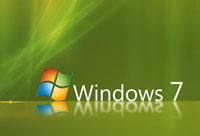Microsoft to make early release of Windows 7 to boost hardware sales amid crisis
Microsoft may start the delivery of its new operation system Windows 7 already in September 2009, not in the beginning of 2010, as it was previously announced.

Microsoft decided to hurry up with the new release in an attempt to boost the sales of computer hardware against the background of the global recession. The earlier release also demonstrates the intention of the corporation to make many Windows XP users finally switch to a new OS bypassing Windows Vista.
Windows 7 proves to be more powerful than Windows Vista. The reviews of the new system have been generally positive so far. Windows 7 will be available in six different versions. There will be two basic versions of the new system - Windows 7 Home Premium and Windows 7 Professional. The versions will target home and business users globally, spokespeople for Microsoft said.
Windows 7 Home Basic is designed for those people who do not require much from their PCs. Starter Edition will reportedly be available in developing countries only. Enterprise and Ultimate versions will come complete with various applications.
Windows 7 was formerly known as Blackcomb and Vienna. The release date for the new system has not been finalized yet. The commercial release is expected to take place in the beginning of 2010.
The new operation system is based on Windows Vista. All applications made for Vista will work on Windows 7. The compatibility of the two operation systems – XP and Vista sparked criticism all over the world, when users found out that XP applications could not run on Vista.
Windows 7 includes a number of new features, such as advances in touch, speech, and handwriting recognition, support for virtual hard disks, improved performance on multi-core processors, improved boot performance, and kernel improvements.
Many new items have been added to the Control Panel, including ClearType Text Tuner, Display Color Calibration Wizard, Gadgets, Recovery, Troubleshooting, Workspaces Center, Location and Other Sensors, Credential Manager, Biometric Devices, System Icons, and Display. Windows Security Center has been renamed to Windows Action Center (Windows Health Center and Windows Solution Center in earlier builds) which encompasses both security and maintenance of the computer.
The taskbar has seen the biggest visual changes, where the Quick Launch toolbar has been replaced with pinning applications to the taskbar. Buttons for pinned applications are integrated with the task buttons. These buttons also enable the Jump Lists feature to allow easy access to common tasks. The revamped taskbar also allows the reordering of taskbar buttons.
Adjacent to the system clock is a small rectangle button for the new feature Peek. Hovering over this button makes all visible windows transparent for a quick look at the desktop. Clicking this button minimizes all windows.
Unlike Windows Vista, window borders, the taskbar and the Sidebar do not turn opaque when a window is maximized when Windows Aero is applied. Instead, they remain transparent.
Subscribe to Pravda.Ru Telegram channel, Facebook, RSS!





